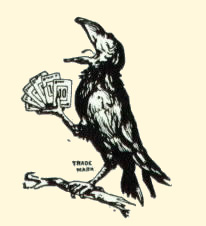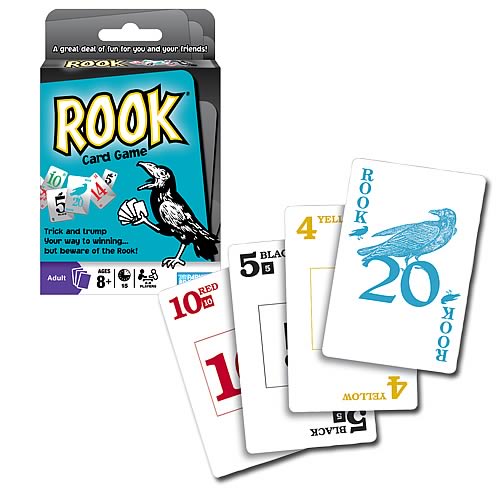Over the summer, a few of my friends from my baseball team got me into Mahjongg. Yes, that's right: I play Mahjongg o_O
I purchased my first set not too long ago, and it's on the desk beside me as I write this out. The red, felt box holding the 144 tile set is in bad shape: The felt is coming off in places, in particular at the corners, and the two small buttons meant to keep a lid on things look as strong as the old buttons on the winter coat I wore in high school, when I was HUGE. I'm afraid the box will burst at any moment o_O
Upon opening the box for the first time, you see four sets of 36 tiles tightly wrapped in clear plastic. Each of the tiles are made of ivory with a hard, pine green coloured backing. According to our baseball team captain Tony, the trick to being an expert Mahjongg player is learning how to pick up the tiles when you start playing. I asked "What do you mean?"
Upon setup, you shuffle the tiles on the table, pick out 36 of the shuffled tiles, and stack them while they are still face down. Once you arrange them in two rows of 18, you take one row with both hands, and stack it on top of the other row. It took me awhile to get it, during which I heard words like "n00b" and "rookie", but I didn't keep my pinky fingers on both ends of the row: That's the secret! ^_^
Mahjongg looks intimidating to outsiders like me o_O The number of tiles, the different Chinese characters, the rules and procedures, and the scoring! I don't want to say Mahjongg is like Gin Rummy, because I will probably get tackled, but to compare the two is like racing a Bugatti Veyron against a Hyundai Accent. Nevertheless, both are automobiles, and in the case of games the object of Mahjongg is to complete four sets or sequences of three, and a pair to win.
Playing out of turn, and grabbing tiles from different ends of the "Wall" are allowed; these are also sources of much confusion when I played for the first time o_O Eventually, I got the hang of it, and even won a game (One game, Phil; let's not go crazy and play in tournaments or anything o_O LOL). Practice helps, but playing the game and getting familiar with the different rules are essential as well; there is a link here on how to play Mahjongg, but the best way is to get right into the fire, and try it out. As long as your confidence is still up, and you're willing to try new things, then your experience with Mahjongg will be A+. If you are a n00b like I am, feel free to detail your experience in the comments. I don't mind sharing that I grabbed the tile from the wrong end a few times o_O LOL
Friday, August 31, 2012
Thursday, August 23, 2012
ROOK - Now With Bird and Hillbillies!
As a fan of Euchre, you can imagine my excitement when I picked up the ROOK card game from the game emporium in town (who am I kidding? You can pick up ROOK anywhere o_O). I like games that are variants of Euchre and Hearts, however it took me awhile to understand and follow ROOK.
No one I know plays ROOK, and the instructions were hard to follow. Frustrated, I turned to the only legitimate source of proper ROOK rules and regulations: YouTube. Most of these types of instructional videos are not too much help, although you can find some helpful tips and tricks, if you know where to look. Some tutors start somewhere in the middle of a game, which is annoying as all get out, some tutors leave you with more questions than answers (Hi ExpertVillage), and then some tutors are downright surly and rude. Fortunately, you find a diamond in the rough that should be more viral than it is helpful ^_^ (Note: The video drags on for a bit, and I can't understand most of what the people are saying; with that said, viewer discretion is recommended, yet it looks like harmless fun from where I'm sitting).
It took some practice and card playing to figure ROOK out. Eventually, I purchased an older version of the game that used language I could understand; I mean, I'm an eighties kid LOL Like most Euchre-style games, ROOK involves bidding, trumps, and sometimes partnership, but that depends on how you play. Unlike all Euchre-style games I came across over the years, there is one particular card that makes me cringe at the sight of it.
In my ROOK box, the top card in the deck is the ROOK card. Not only is it the ultimate high card of the game, and worth twenty big points, but perched above the "20" is a hand-drawn, creepy, possessed raven o_O With its head turned, as if something went bump in the night behind him, the black bird looks ready to begin its ascent into the midnight sky! This representation is nothing compared to the famous cawing or "laughing raven" that graced ROOK card boxes for generations.
I can understand why my older sister hates birds, and why this bird makes Alfred Hitchcock's "The Birds" look like a hummingbird migration. If I have to play any game with that bird, I would rather run out of the room in terror ducking my head from every bird I see for the next three days. According to rookcards.com and the Rook Card Collectors Association, game enthusiast and inventor George Parker, and his wife Grace developed the game from the standard deck, replaced the face cards with numbers ascending from 11 to 13, added four "14" cards, and replaced the suits with colours. Finally, for some wacky reason no one knows, Mrs. Parker added a high card, and called it ROOK, after a type of raven thus bringing the deck to fifty-seven cards. The creepy, hand-drawn, cawing, ROOK playing raven came later, and the game would eventually become mainstream (For more on the birth of ROOK, click here!)
I didn't introduce ROOK to my friends as of yet; I'm afraid the game would descend into a discussion about the creepy bird on the box o_O It does look intimidating at first, but I assure you ROOK will grow on you and your circle of game playing friends ^_^
In my ROOK box, the top card in the deck is the ROOK card. Not only is it the ultimate high card of the game, and worth twenty big points, but perched above the "20" is a hand-drawn, creepy, possessed raven o_O With its head turned, as if something went bump in the night behind him, the black bird looks ready to begin its ascent into the midnight sky! This representation is nothing compared to the famous cawing or "laughing raven" that graced ROOK card boxes for generations.
 |
| NEVER MORE! o_O How can he win with a hand like that?! |
I didn't introduce ROOK to my friends as of yet; I'm afraid the game would descend into a discussion about the creepy bird on the box o_O It does look intimidating at first, but I assure you ROOK will grow on you and your circle of game playing friends ^_^
Sunday, July 29, 2012
What Do You Do With A Rubik's Cube?
 |
| Complete me! O_O AHH! One of life's mysteries solved, however would you do it all over again? |
It tempts me to mess it up again, however I would know how to fix it by going backward! There is the dilemma with giving a complete Rubik's Cube to a friend.
- They don't believe you actually finished it.
- They shuffle the squares so much that you can't complete it again.
Speaking on the latter point, I can't imagine how I would feel should I never complete a Rubik's Cube again. I suppose in the shifting and turning of sides, the adjusting and fixing of corners, and the losing and passing of time I could complete it, but how old would I be? Forty? Fifty? One hundred and twenty?! o_O
One of the solutions to any Rubik's Cube is to turn the cube, and rotate a side toward or away from your body. If you repeat those two steps, eventually your Cube will be solved. I tried that, but I felt the squares were twirling me around in circles LOL I'm sure there is one Rubik's Cube enthusiast who heard them all!
 |
| Pottermoosh: Complete ALL the Cubes! |
One such enthusiast is British video blogger and student Lindsey Williams, whose YouTube channel name and stage name is Pottermoosh. Her friend Alex (Nerimon, also of YouTube) introduced Rubik's Cubes to her not too long ago, and now her collection includes Sudoku themed, 4x4 and even 6x6 Rubik's Cubes O_O I noticed in her videos most, if not all, of her cubes are complete; does she shuffles the cubes and start over? Who shuffles her Rubik's Cubes? What about the dreaded Rubik's Sphere? Who exactly is Rubik?
According to wikipedia, which is the one source for reliable and truthful information to bolster anyone's university term paper, Hungarian sculptor Erno Rubik invented the crafty and colourful puzzle in 1974, but the "Hungarian Magic Puzzle" took off as the worldwide phenomenon "Rubik's Cube" in the 1980s. Not only will you find the history of Erno, the Cube, and track the puzzle's rise to household fixture, but information on software, the patent process, and a suspect list on how to complete a Rubik's Cube should your frustrations and rising anger for the planet Earth and everything in it boil over.
In the meantime, I will keep my Rubik's Cube the way it is, and buy a new one to fix up. This one here is quite ancient, and there are air pockets forming underneath the coloured stickers. Who knows? If I fix enough cubes, I might end up like this dude...
Keep Calm & Game On, Players!
Subscribe to:
Posts (Atom)
